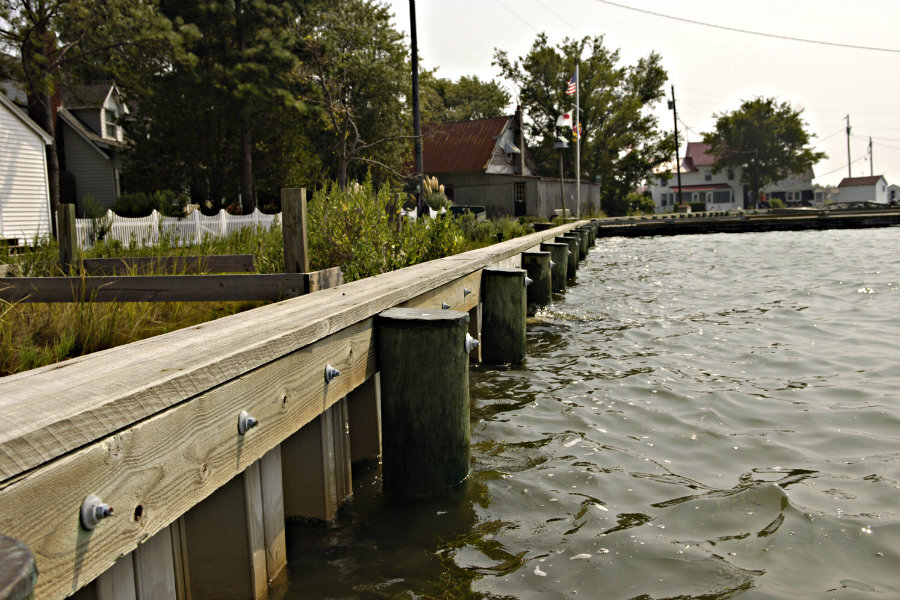Climate change could leave many military bases underwater
Loading...
Over the past decade alone, thermometers have measured some of the hottest average temperatures in recorded history. As the mercury rises, climate change is quickly becoming an unfortunate reality for many. In the United States alone, 13.1 million people who live in low lying areas could be forced to relocate by rising tides, according to sea level projections.
The United Nations’ Intergovernmental Panel on Climate Change predicts sea levels will rise between one and three feet by the end of the century, creating a slew of tangible impacts on industry and residential life. A new report released on Wednesday by the Union of Concerned Scientists brings that reality home to a new group, the military, with predictions that at least 18 military bases are at risk from rising tides.
“Reports like this are very helpful,” says Sean Hecht, the co-executive director of the Emmett Institute on Climate Change and the Environment at UCLA School of Law, in a phone interview with The Christian Science Monitor. “We don’t have the resources to understand each and every natural process, so reports like this help alert us to changes that greatly impact key infrastructure.”
The report’s lead author, Erika Spanger-Siegfried, says the report is just “a snapshot of expensive coastal flooding at a handful of coastal bases.”
The hope, Ms. Spanger-Siegfried tells the Monitor, is that the military will take this report into consideration, and use these findings to do more intimate base-level studies at all threatened coastal bases, many of which were not included in the study.
“The military will know best the right steps to take to build resilience,” Spanger-Seigfried tells the Monitor. Currently, the US House of Representatives has blocked funding for a climate adaptation plan that effects military holdings, although the Senate has not.
Mr. Hecht echoed Spanger-Siegfried’s sentiments, telling the Monitor that the military is already investing much of its resources into preparing for climate change. “The military has a lot of credibility,” he says, “and as a traditionally conservative institution its response to climate change has the potential to open eyes to the dangers of sea level rise.”
In 2014, the Department of Defense issued a Climate Change Adaptation Roadmap, noting the areas in which it was crucial for the military to respond to the threat of climate change in order to protect key national security interests.
“These weren’t immense challenges for us – they were things we could handle,” said retired General Paul J. Kern of military preparedness after extreme weather (including flooding) devastated a military base in Charleston in 1989, according to a CNA report on national security and climate change. “But the planned training exercises – preparing us for our core military mission – were not as good as they could have been. It’s a very subtle thing, but there you have it in a nutshell: Extreme weather can affect your readiness.”
Researchers studying the effect of predicted sea level changes used storm surge models developed by the National Oceanic and Atmospheric Administration, elevation data, and sea level projections from Climate Central to evaluate the risk that future ocean movement could pose to military bases along the East Coast and the Gulf of Mexico.
The report’s authors note that much depends on how climate change is accelerating emissions. The projected sea level rise in the report is based on current trends, but the real results could be variable if human emissions increase or decrease over ensuing decades.
The rate at which sea level rises is dependent on two factors, says Spanger-Siegfried. In the past, ocean expansion caused by a warming atmosphere has been the primary driver of sea level rise. Today, however, the melting of land-based ice sheets such as those in Greenland and Antarctica has surpassed ocean expansion as a factor in global sea level rise.
Researchers used two different rates of projected sea level rise, developed by the 2014 National Climate Assessment, to investigate the future possibilities: a “moderate” rate of sea level rise that would see the ocean rise 3.7 feet by the end of the century, and an “accelerated” rate that would see the ocean rise 6.3 feet.
The report found that even with a moderate level of sea level rise, all but two of the military bases examined might flood as many as 100 times per year by the end of the century. With an accelerated rate of sea level rise, four of the bases could lose between 75 and 95 percent of their land to flooding.
In the moderate rate scenario, half of the bases investigated would see fully a quarter of their usable land area underwater.








